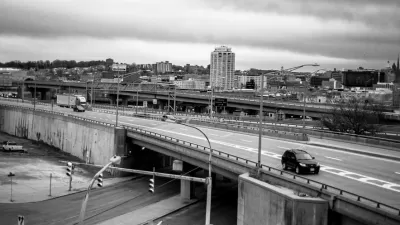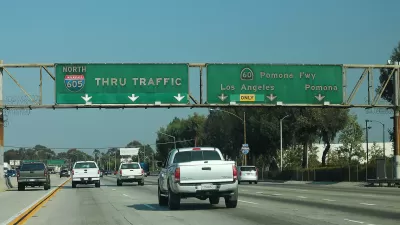In cities like Boston, the government’s right to take private property displaced residents and destroyed vulnerable neighborhoods and communities.
In a segment for the urban planning YouTube channel City Beautiful, Dave Amos looks at the history of eminent domain and how it has decimated neighborhoods in cities across the United States.
Government acquisition of private property for public use is not always a clear-cut process, and the idea of public use should really be understood as the public benefits such actions provide, says Amos. And the justifications for use of eminent domain are sometimes questionable, he argues.
"City leaders would often claim an area was blighted and use it as a rationale for abusing eminent domain and transferring properties from poor property owners to developers. And they would often build projects for the wealthy—things like condos, performing arts centers, and shopping centers," notes Amos.
He also takes issue with the very idea of blight and planners’ assertion that these areas needed to be destroyed and replaced with something better. One example of the urban renewal wave sweeping across the nation was what happened in Boston’s West End neighborhood. It was demolished in the 1950s, displacing over 10,000 residents, many of whom ended up in substandard housing.
The motivation for razing the West End was not improving neighborhoods, says Amos. Instead, developers saw the area as ideal for redevelopment of central Boston. "Poor and minority neighborhoods were seen as a disease that needed to be exterminated so that wealthy residents, shoppers, and businesspeople could return to the central city," adds Amos.
FULL STORY: Midweek Video: How Eminent Domain Destroys Neighborhoods

Study: Maui’s Plan to Convert Vacation Rentals to Long-Term Housing Could Cause Nearly $1 Billion Economic Loss
The plan would reduce visitor accommodation by 25,% resulting in 1,900 jobs lost.

North Texas Transit Leaders Tout Benefits of TOD for Growing Region
At a summit focused on transit-oriented development, policymakers discussed how North Texas’ expanded light rail system can serve as a tool for economic growth.

Using Old Oil and Gas Wells for Green Energy Storage
Penn State researchers have found that repurposing abandoned oil and gas wells for geothermal-assisted compressed-air energy storage can boost efficiency, reduce environmental risks, and support clean energy and job transitions.

Private Donations Propel Early Restoration of Palisades Playground
Los Angeles has secured over $1.3 million in private funding to restore the Pacific Palisades playground months ahead of schedule, creating a modern, accessible space that supports community healing after recent wildfires.

From Blight to Benefit: Early Results From California’s Equitable Cleanup Program
The Equitable Community Revitalization Grant (ECRG) program is reshaping brownfield redevelopment by prioritizing projects in low-income and environmental justice communities, emphasizing equity, transparency, and community benefits.

Planting Relief: Tackling Las Vegas Heat One Tree at a Time
Nevada Plants, a Las Vegas-based nonprofit, is combating the city’s extreme urban heat by giving away trees to residents in underserved neighborhoods, promoting shade, sustainability, and community health.
Urban Design for Planners 1: Software Tools
This six-course series explores essential urban design concepts using open source software and equips planners with the tools they need to participate fully in the urban design process.
Planning for Universal Design
Learn the tools for implementing Universal Design in planning regulations.
Ascent Environmental
Borough of Carlisle
Institute for Housing and Urban Development Studies (IHS)
City of Grandview
Harvard GSD Executive Education
Toledo-Lucas County Plan Commissions
Salt Lake City
NYU Wagner Graduate School of Public Service





























